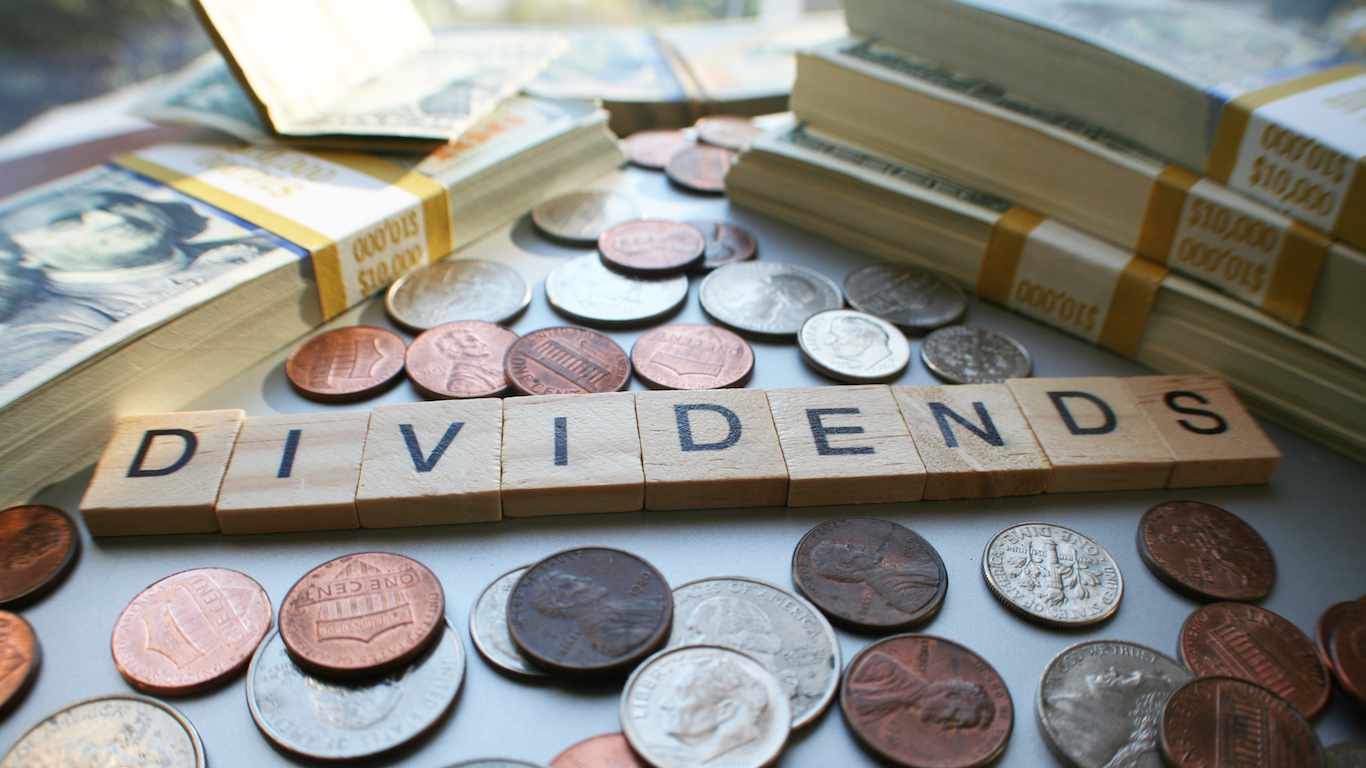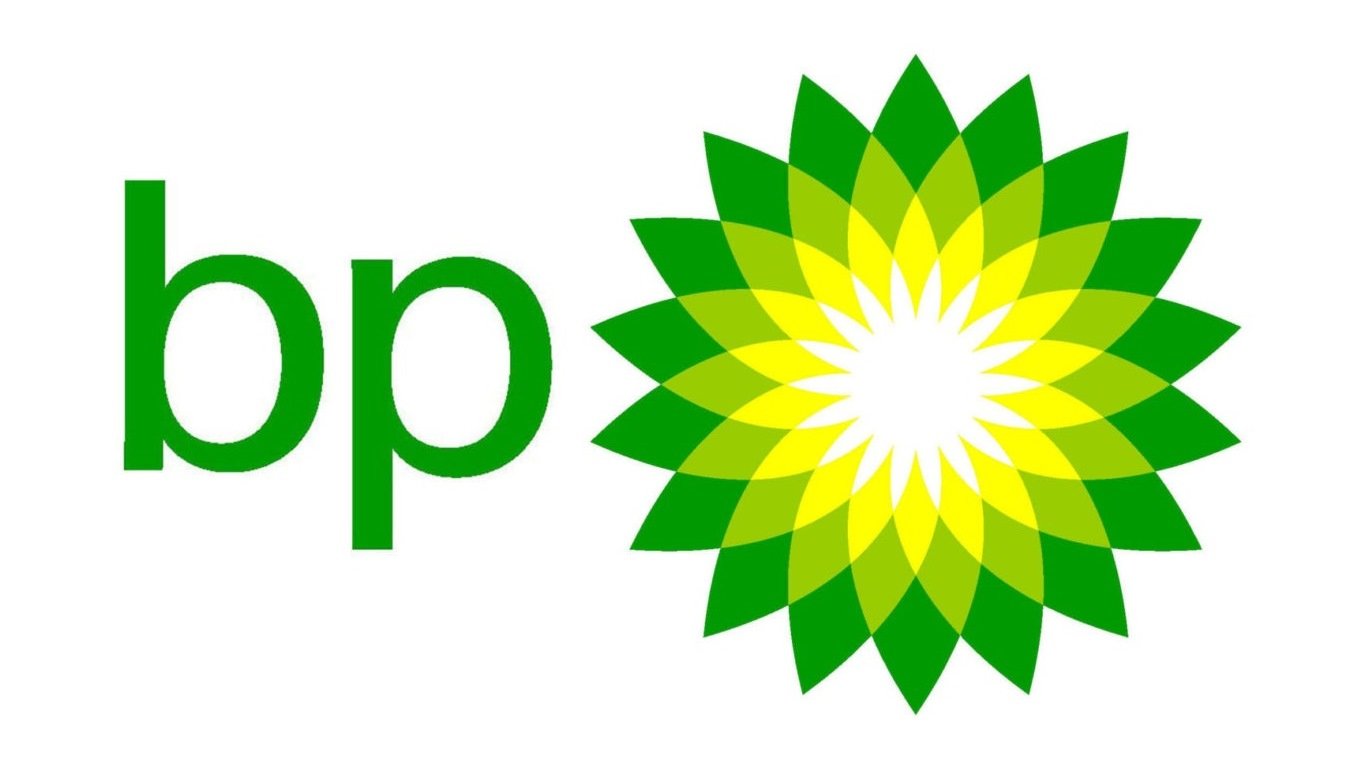

It is no secret that investors love their dividends. After all, those dividends can account for up to half of an investor’s total return over time. And when it comes to dividends for long-term holders, those investors really love to see when their company raises its dividends year after year.
24/7 Wall St. has tracked many groups of dividend announcements over the years. In fact, we recently published a list of 25 companies with 40 years (or more!) of dividend hikes. And then there are some companies that look like Ebenezer Scrooge is setting their dividend policies.
Many companies are fairly new to the game of having shareholders who “clip coupons” via dividends, but the trend has grown. Tax reform also has made it almost painless to unlock that foreign-held cash that large companies were bashed about for more than a decade. Some stocks have done incredibly well with appreciation of their share price over the years while still paying dividends that are paltry.
Many large-cap stocks could quite easily come with much higher dividends than they do currently. The benefits of tax reform have been made permanent, and it’s easier than ever for most solid companies to evaluate their longer-term after-tax earnings and cash flow expectations that can be used to pay dividends ahead.
For a company to keep raising its dividend, it’s important to understand what is a “fair market value” for a dividend. The median Dow Jones industrial average dividend yield from the index’s 30 components was last seen at 2.37%. The S&P 500 Index has 500 companies, 408 of which are dividend payers. Even if you only look at the S&P 500 stocks that do pay dividends, the S&P 500’s median dividend yield is just about 2.0%.
It is also important to focus on actual earnings per share (EPS), and not just the “non-GAAP” earnings that are used by so many analysts on Wall Street. Companies must have actual after-tax earnings to safely pay dividends, and many companies want to avoid the complicated explanations whether a dividend may be from cash flows or may be classified as a return of capital and not actual dividends based on net EPS.
Some companies simply prefer to keep their cash stockpiles growing. Over time, that offers a safety net against rainy days if the next recession becomes more of a reality. Some companies may prefer to keep cash to fund acquisitions and to reinvest into their businesses. At the end of the day, there are many companies out there which have very low dividend yields and low payout ratios. Many of those dividend misers even have earnings growth for years ahead and have lots of room to boost their dividends.
Here are seven companies that could easily double their dividends in the years ahead.
FedEx
FedEx Corp. (NYSE: FDX) has had some reasons why its dividend payout was lower in the past, but that could be changing in the years ahead. FedEx’s 2018 annual report does show that the company increased its quarterly payout by 30% for fiscal year 2019. That’s a great start, and its 2018 annual report showed that $535 million was paid out in its fiscal 2019 in the form of dividends. The annual report also said that its board can review the payout ahead.
Even after a hike of 30% , the $0.65 quarterly payout per share yields barely 1%. And its $2.60 per share payout compares with last year’s $15.31 per-share earnings. FedEx is expected to earn $17.33 per share in 2019 and $20.02 per share in 2020, so its payout is a mere 15% of this year’s expected earnings. Rival UPS pays out closer to half of its earnings and has a 3% dividend yield.
Intuit
Best known for its TurboTax and QuickBooks, Intuit Inc. (NASDAQ: INTU) has made efforts in recent years to diversify its strategy and offerings. The company recently had close to $2 billion in cash and liquid assets with limited debt, and it manages to grow revenues and EPS each year. Unfortunately, its current $1.88 (used to be $1.56) per share annualized dividend payout generates a yield of only 0.83%, based on a $226 share price. Intuit’s payout ratio is also not even quite at 30% of the current year earnings expectations, and it’s even lower compared with future years’ earnings estimates.
One issue that may hinder Intuit’s dividend growth from getting too excessive is that the $58.5 billion market cap implies that each 1% in dividend yield would equate a $580 million liability. Either way, this is very low for a stable earnings grower in software with a very established business model.
Nike
Nike Inc. (NYSE: NKE) has recovered handily from its lows, and recent controversies are falling farther in the rear-view mirror. The problem today is that Nike’s $0.80 annualized dividend and $83.50 share price make for a dividend that is not quite 1%. That’s embarrassingly low for a Dow Jones industrial stock. There is the issue that Nike is paying out 30% of its expected current year EPS, but every analyst sees those earnings continuing to rise in the years ahead, even if margin pressures may remain an industrywide concern.
Nvidia
Admittedly, Nvidia Corp. (NASDAQ: NVDA) is not a company that most investors buy for dividends, but its hyper-growth and exponential share price gains of the past are unlikely to continue forever (its market cap is now $167 billion!). Its graphics chips dominate in video games, augmented and virtual reality, and crypto-mining, and it has serious opportunity in automated cares and in machine learning.
Nvidia’s current 15 cent per quarter payout comes to a $0.60 per share annualized dividend, and that generates a mere 0.2% yield based on its $275 share price. This is very far shy of what many of the top money-making semiconductor and technology companies offer shareholders in their dividend yields.
Nvidia earned $4.65 per share in calendar 2017, and its earnings a few years out are expected to rise to almost $10 per share. Maybe it doesn’t want to chew into its research and development and potential acquisition dollars too much yet, but if there is a tech giant that looks set to boost its dividend if it wanted to, Nvidia fits that bill.
PVH
PVH Corp. (NYSE: PVH) screens out in the “embarrassingly low dividend club” with a lousy 15 cents per share annualized dividend. Calvin Klein, Tommy Hilfiger, Van Heusen, and IZOD are just some of the apparel maker’s brands, and its founding dates back to the late 1800s. The company has slowly decreased its longer-term debt. Tariffs and trade wars or not, this is an embarrassingly low dividend when you consider that a normalized $9.28 in EPS for 2019 is predicted by analysts, versus $7.94 per share last year.
PVH has managed to grow earnings and revenues, and that’s expected to continue. Quite simply, PVH is another company that could ramp up its dividend payments exponentially and it might not interfere with its capital allocation plan’s focus on continuing to pay down debt and to repurchase an aggressive number of shares.
Textron
Despite Textron Inc.’s (NYSE: TXT) choppy earnings of late, Wall Street expects that to change this year and in the years ahead. With an EPS estimate of $3.32 for 2018 and $3.72 in 2019 (versus $2.45 per share in 2017), it is not too difficult to imagine that Textron could raise its $0.08 annualized common stock dividend exponentially if it wanted to.
Textron is known around the world for its powerful brands, such as Bell, Cessna, Beechcraft, Hawker, Jacobsen, Kautex, Lycoming, E-Z-GO, Textron Off Road and Arctic Cat. Even with the very cyclical nature of some of its businesses, a 0.1% yield just looks, sounds and feels way too low. Textron might not really be a candidate for its dividend to double — it might be a candidate to lift its dividend exponentially.
Visa
Though Visa Inc. (NYSE: V) has raised its dividend, it currently yields only 0.6%. This is tiny considering its $326 billion market cap, and most analysts agree that years of earnings growth awaits the credit card processing giant. Visa currently pays out 84 cents annually, but its 2017 earnings of $3.48 per share is against Thomson Reuters expectations of $4.59 per share for 2018, $5.32 per share in 2019 and $6.17 in 2020.
With payment transaction growth continuing onward, Visa could be paying out $2.00 per share as its annualized dividend quite easily in the next five years, and it would only be paying out about 32% of its expected 2020 EPS (or about 44% of its expected 2018 EPS). American Express has a 1.3% yield. Rival Mastercard carries an ever lower yield at 0.5%, but it is only about two-thirds the size of Visa, and Visa is the more prominent stock, given it is a Dow Jones industrial average member.
A final reminder: Dividend policies may change rapidly over time. Some of these companies already may be planning to boost their payouts.
Take This Retirement Quiz To Get Matched With An Advisor Now (Sponsored)
Are you ready for retirement? Planning for retirement can be overwhelming, that’s why it could be a good idea to speak to a fiduciary financial advisor about your goals today.
Start by taking this retirement quiz right here from SmartAsset that will match you with up to 3 financial advisors that serve your area and beyond in 5 minutes. Smart Asset is now matching over 50,000 people a month.
Click here now to get started.
Thank you for reading! Have some feedback for us?
Contact the 24/7 Wall St. editorial team.
 24/7 Wall St.
24/7 Wall St.


